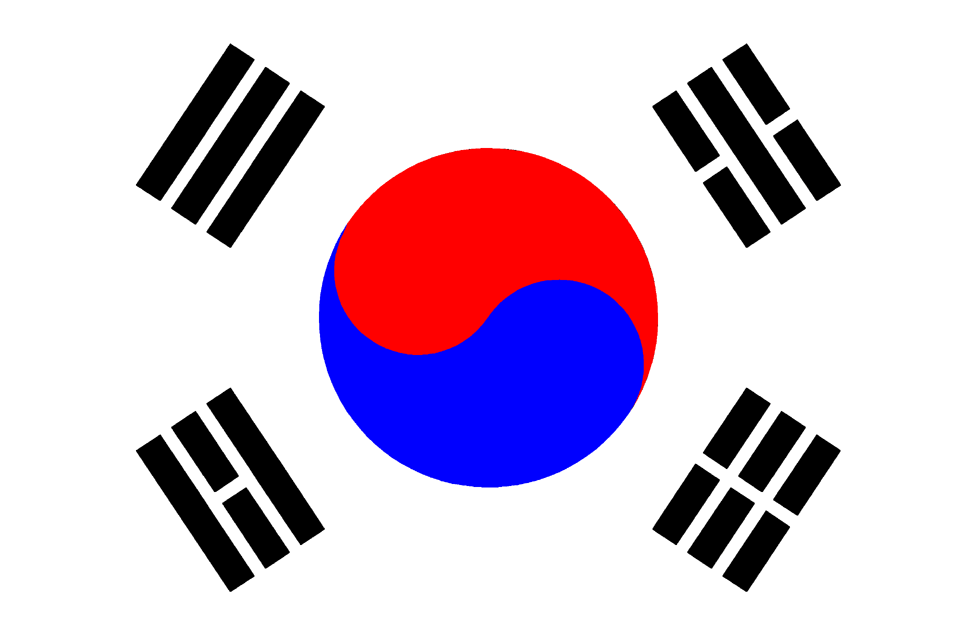Asian-American women must learn to deal with their dual identies
By Kaori Hatama
Clara Wang remembers dying the hair of her Barbie doll black with her mother’s mascara when she was young.
“Barbie dolls all come in blond and blue eyes and I really remember distinctively I took my mom’s mascara and dyed her hair black,” Wang laughs. “That was not a good idea. My mom was not all that happy either. She was like ‘my mascara, your Barbie -two things completely gone.'”
Wang’s experience is not an unusual one. Born as an Asian-American from immigrant parents, Wang – and other Asians – realize their bi-cultural identities while growing up. What is it like to be brought up in the United States, but born to immigrant parents? What kind of awareness does being brought up in two cultures bring? Four Bryn Mawr College undergraduates  shared their experiences of growing up as Asian-Americans.
shared their experiences of growing up as Asian-Americans.
Wang’s parents, who were born in Hong Kong, came to the states for college in mid 1970’s. Wang was born in Philadelphia attended a Catholic elementary school on weekdays and Chinese school on weekends. Except Wang and one African-American girl, the rest of the students at her Catholic elementary school had brown hair, hazel
eyes or blond hair, blue eyes.
“In elementary school I wanted people to acknowledge me like a person. It was
more like ‘Can you stop looking at me like I’m Asian and look at me like an equal?'” said Wang. She felt she was not treated as normal by the others, which annoyed her.
“The fact that I have different cultural background should not affect how to interact with people but it did. That was kind of annoying” said Wang.
She and the only African-American girl were specifically called to have their photos in the front of the school’s pamphlet in the center.
“At that time I was like ‘that’s cool’ but when I look back at it I thought the school was promoting diversity even though we were the only two in the entire school,” said Wang.
Her family moved to California due to her father’s job. Her middle school and high school had 50 percent of Asian students. Because she looked similar and shared similar jokes, she felt comfortable hanging out with Asian-Americans.
However, she admits she had a nagging feeling of, “Am I doing the same thing they did to me in elementary school which is ostracizing any American friends?”
At Bryn Mawr College, she feels it does not seem feasible to have clear
distinctions like she did in high school where there were high populations of Asians.
“If I had gone to the University of California and the fact that I came here it’s kind of interesting. Here there’s no way you can get away with just having Asian people as your friends versus at the UC, where I would have been like deluged with Asian friends” said Wang.
Because Bryn Mawr College has more diversity compared to her high school, Wang said she does not have particular hold on Asian-Americans. Another reason is because she realized cultural divide even between West Coast Asians and East Coast Asians.
“A lot of the culture here in East is from older Chinese immigrants and evolved in a different way whereas where I’m from we still have new immigrants coming in and our culture ties back to China a lot stronger” said Wang.
When asked to draw her identity, Wang wrote “America” on the left end and “Asia” on the right end. In the middle, she wrote 1/2 and drew a stick person above representing her.
“There’s so many things about American culture that I don’t understand like pop culture — but then Asia, I can’t understand it all either. It’s kind of like in the middle. It’s like incomplete education,” laughed Wang.
“I hated the term Japanese-American,” said Eri Koike referring to her time in high school.
“That’s not who I was. I just thought Japanese-American the terminology didn’t really fit into who I was,” said Koike.
She felt Japanese-American were people who were Americanized or “white-washed”. She felt the stereotypical Japanese-Americans could not speak Japanese nor had emotional attachment to Japan, which made her feel they were losing or compromising their Japanese side.
Eri Koike’s parents moved to the United States from Japan because her father
was transferred to a job in California. Her father was then transferred to New Jersey where Koike was born. Like Wang, Koike also attended a Catholic School on weekdays where the students where predominately Caucasians and she was one of two Asians in her grade.
“I definitely felt something was different about me,” said Koike. I saw the other girl, she’s really ‘white-washed’ Filipino and I remember thinking she got along
with all the kids in school. I remember thinking I was different because I couldn’t really get into make friends with all of them. I didn’t know where I belonged to the school.”

The Flag of Japan
Because she attended Japanese school on Sunday and spoke Japanese at home, she identified herself as Japanese at that time. However when she attended middle school and high school, she “clicked” with Asian-Americans.
“I thought ‘Oh, this was what I was missing-like people I could relate to.'” Her middle school and high school was 15-20 percentAsians. “I was shocked or surprised there were so many people that look similar to me and even though a lot of them were Chinese-Americans, we didn’t share similar cultural backgrounds but we felt connected,” she said.
Back then, she felt separated between being Japanese and American. Because her friends were mostly Chinese-Americans, she identified herself as Asians than Japanese-Americans.
However, her experience at Bryn Mawr College made her more comfortable identifying herself as Japanese-American.
“People would ask me like ‘What are you’ or ask questions about my identity and I didn’t really know how to answer it” said Koike.
Other people told her she was Japanese-American. Also as she discussed identities issues with Asian-American friends, she became more comfortable in identifying herself as Japanese-American.
“I sort of realized Japanese-Americans can mean so many different things. If I had to identify myself I used to say Japanese and American side of me were separate and I could not really say which one was more important but now I can just combine it,”
said Koike.
Also, when she attended a summer program at a Japanese university, she was able to identify herself as more American than she thought she was.
“I was vocal about my opinion in a class discussion and the guy next to me was like ‘Wow, you’re very American’ which I never viewed myself that way and I became more comfortable identifying myself as American,” said Koike.
Koike drew a big circle, which said Japan, and inside the circle, she drew another circle, which said America. She drew another circle inside America, which she said was her identity.
* * *
“I would identify myself as Chinese who was born and raised in America. I
would feel myself funny called Chinese-American because I quite don’t know what it means. I don’t know how I fit into America,” said Kuang.
Cynthia Kuang felt comfortable hanging out with different ethnic groups than just Asian-Americans, maybe partly because of her upbringings. Kuang’s parents moved to New York from China about 25 years ago. She attended elementary school on weekdays and Chinese school on weekends. Because her grandparents mostly raised her and they spoke Chinese to her, she saw herself as Chinese. She went to an elementary school in an immigrant neighborhood that she did not feel as if she was out of place. However, she felt she was not the same.
“Lunch time we brought our lunches and my grandparents made Chinese ethnic dishes, so all my friends were like ‘What is that?’ I did feel uncomfortable when they looked at my lunchbox and told be ‘That’s disgusting,'” said Kuang.
Her middle school was predominately consisted of immigrant children and she recalls hanging out with Hispanics and African-Americans. However, her high school was a big shift for her. The school was 64 percent Asian-American, 30 percent Caucasian, less than 10 percent Hispanics and African-Americans. She realized the students self-segregated themselves and there were hangout spots for different race.
“I was never in my comfort zone at that school because it was so self-segregated. I felt like it was hard to fit into where people thought I belonged because I hang out with a lot of African Americans and Hispanics more than 64 percent of Asian-Americans,” said Kuang. Some Asian-Americans gave her double takes and asked her whether she was friends with whom she was with.
Her experience at Bryn Mawr College was another shock for her because for the first time, Caucasians were the majority with similar socioeconomic backgrounds.
“I once again quite not fit in,” said Kuang. She could not quite relate to the majority of students. She was happy with Asian Student Association where people were asking themselves what it meant to be Asian-American, which she found herself doing. At the same time, she found she could not relate to everyone that looked Asians either.
“I tend to notice people tend to stick with their race which I’m not comfortable with. I find myself really trying to know people who are not Asian-Americans mostly African-Americans and Hispanics,” said Kuang.
She drew two figures one said “America” and referred to white America and another said “Asia America”. She drew an arrow from “Asia America” to “white America” with words “Can they fit together?” on top. She also drew China on the back
of the paper. She drew her identity with a stick person torn half one in Asia America and the other half in China.
* * *
Jackie Kim’s awareness of her identity issues led her to major in sociology at Bryn Mawr College. “I’m studying myself” said Kim. Her parents moved from Korea to the United States in 1983. Kim was born and raised in Pennsylvania. She attended elementary school and Korean Church, which also had Korean language school. She
grew up in a community with a lot of Jewish and Caucasians where there was only couple of Asians. Kim became aware of her identity after other people started mentioning about it.
“Towards fifth and sixth grade, I became aware of differences because I remember getting in a big argument with one guy who called me ‘Chinese something’ I was really taken back by that because I’m not Chinese and surprised that he even brought that up,” said Kim.
She recalls her junior high was diverse with significant number of minority population, which changed her to hang out with mostly Korean people. She identified herself as Korean through some of the comments people made to her. She recalled getting in an argument in eighth grade with a Caucasian man.
“He said he was more American than me and I was like ‘What does that mean?’ because I was born here, I speak English fluently, and I am pretty sure I have better grades than him,” said Kim.![]()

Interaction with people made her become aware of her identities. She went to a high school where once again the predominant population was Caucasian with only couple of Asians and one or two African Americans.
“Everyone was rich, white, middle class kids I didn’t really feel like I could relate to them. In elementary and junior high, I had large group of friends and social but in high school I was not motivated to make friends with the kids there and spent mostly with Korean kids,” said Kim.
Coming to Bryn Mawr College, she was able to relate to Asian-Americans from the beginning. She thought about what it meant to be Asian-American and attended Asian Students Association. After studying sociology and about Asian-Americans, she thinks of Asian-American as a political symbol.
“We are not all united together under the label of Asian America because we have common cultural similarities or anything but more because American society tells
us we are Asian-Americans,” said Kim. She would identify herself as a Korean living in America like Jewish Diaspora. She said she would draw her identity as a Korean circle within an American bubble. She sees America as her home but she identifies herself as Korean.
Even though all four students were born and raised in the United States, when they drew their identities, their parents’ country occupied half of their identities even though they never lived there for a long time. Coming to Bryn Mawr College also had impact on how they identify themselves as well.
